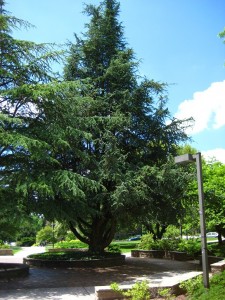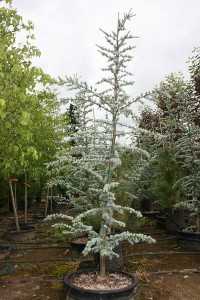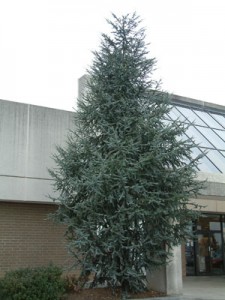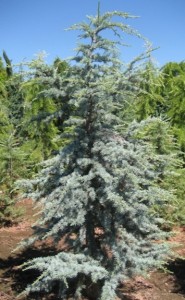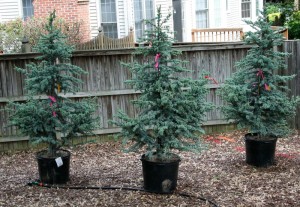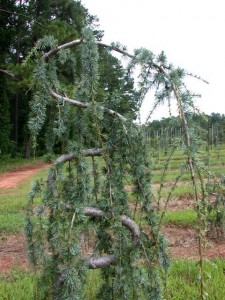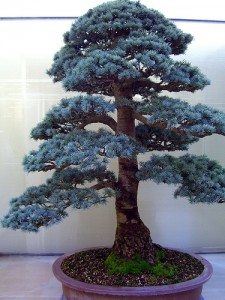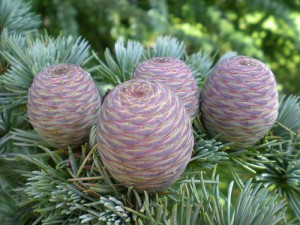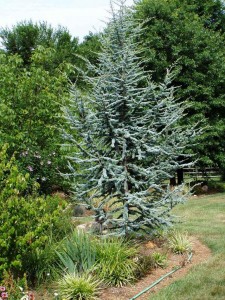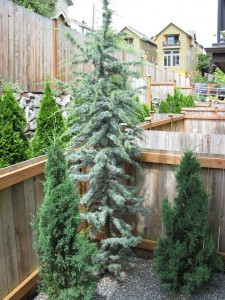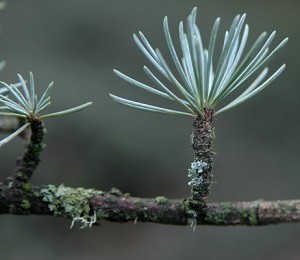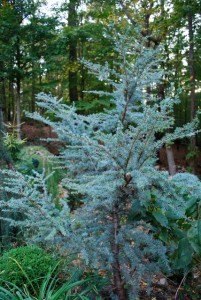Atlas Cedar
Atlas Cedar is a species of picturesque coniferous tree found in the Atlas Mountain Range of Morocco and Algeria at an altitude of 1,370-2,200m. It has a loose pyramidal form when young, and its striking green or bluish-green foliage, along with its long branches, spread rapidly, becoming flat-topped with age. When given enough room to grow freely, it can reach up to a height of 40m, and its crown can spread up to 12m.
Scientific Classification
| Kingdom | Plantae |
| Division | Pinophyta |
| Class | Pinopsida |
| Order | Pinales |
| Family | Pinaceae |
| Genus | Cedrus |
| Scientific Name | Cedrus atlantica |
Quick Information
| Similar to | Lebanon cedar |
| Size | Large trees with a fairly straight trunk and horizontal lateral branches; 30-35 m tall with 1.5-2 m trunk diameter |
| Leaves | Simple, needle-like leaves with spiral arrangement and parallel venation; the blade length is about 10-25 mm; no change in fall color |
| Flowers | The flowers are not showy; female flowers grow on the upper part of the tree while the male flowers are found in the lower parts; female flowers mature into cones |
| Cones | Average size of 9 cm but may grow up to 12 cm; oval or conical male cones that are green when young, but turn brown with age; purple female cones are found on the upper branches; has a dry and hard fruit covering |
| Tree Type | Evergreen |
| Branches | May droop and not showy |
| Distribution/Range | In Morocco, around the Northern High-, Middle-, and Oriental-Atlas range; in the Central and Western Rif Mountains; in Algeria, around the Aures and Djurdjura Mountains |
| Hardiness Zones | 6-9 |
| Growth Rate | Grows slowly with an annual height increase of 12 inches |
| Growing Conditions | Humidity: Grows in the humid regions of its native range Winter Conditions: Can survive in moderate cold but does not prefer areas that receive heavy snow Summer Conditions: Tolerates hot and dry weather Rain: Moderate rainfall Sunlight: Thrives when exposed to direct sunlight; partial shade is also important for growth Soil Requirements: Adapted to alkaline, acidic, sandy, loamy, moist, rich, and well-drained soils; it is also tolerant to drought |
| Diseases and Pests | No great harm is caused by diseases or pests; sometimes affected by the Deodar weevil, tip blight, black scale, and root rots; sap suckers may puncture small holes in the tree trunk |
| Wildlife Value | Forms pure, as well as mixed forests, on the Atlas Mountains in Morocco providing a suitable natural environment for the endangered species of Barbary macaque; different species of birds use these trees for nesting and roosting |
| Cultivars |
|
| Uses | As specimen and ornamental trees in landscaping and gardening; for timber production; bonsai |
| IUCN Conservation Status | Endangered |
Interesting Facts
- The Atlas cedar produces natural oil with a distinctive smell that deters pests and insects. This is the reason cedar wood is used in making furniture.
- The South Lawn of White House in Washington, DC has an Atlas cedar, in which President Carter had a treehouse designed and built for his daughter Amy Lynn Carter.
References
- https://en.wikipedia.org/wiki/Cedrus_atlantica
- https://edis.ifas.ufl.edu/publication/st133
- http://www.missouribotanicalgarden.org/PlantFinder/PlantFinderDetails.aspx?kempercode=c203
- https://plants.ces.ncsu.edu/plants/cedrus-atlantica/
Published on December 23rd 2015 by admin under Cedar.
Article was last reviewed on 5th December 2024.


